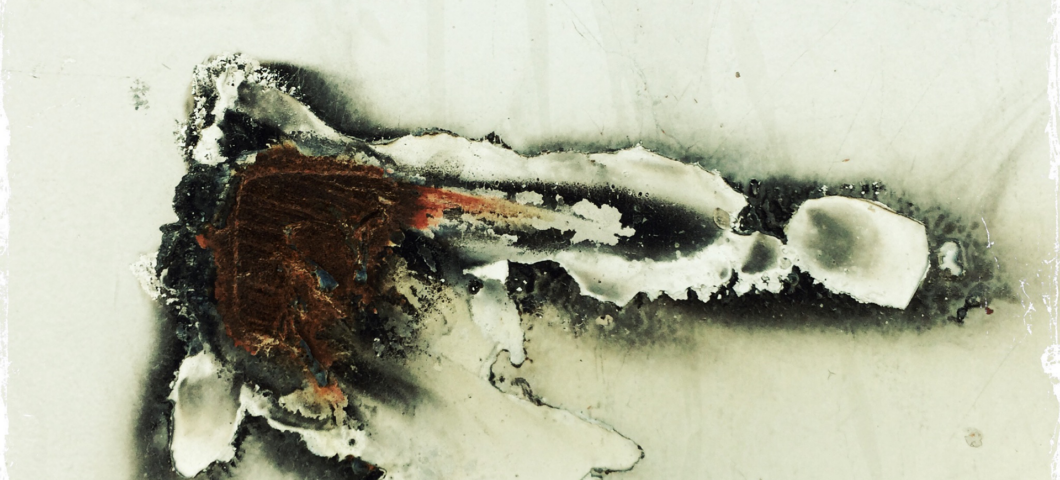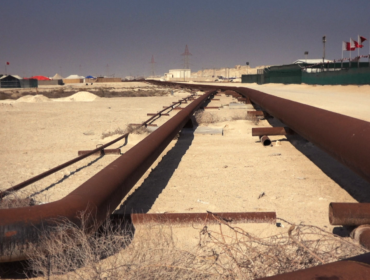If you would like to pluck up the courage to make your own decisions; if you don’t want to let the opinions of others make you doubtful, those presented to you in the outside world, inside clinics and health care centers, inside the territories of science where one believes to have entered the realm of truth, if you have realized for yourself that the way you have chosen for yourself is the right one, then give in to reading the next pages.
You and only you have to make decision into an unpredictable future, it’s you who has to carry the risk. Nobody can take this burden off your shoulders, no experts, no friends, nobody!
10 years of experience allow us to say that Biestmilch is a powerful tool in the treatment of cancer. Immune and inflammatory parameters return back to normal. CD4/CD8 ratio normalizes. Side-effects of chemotherapy are far less pronounced in many cases. This comprises hair loss, nausea, gut issues, mood swings etc.
Here, you can find texts I wrote about this natural remedy that in my opinion cannot be topped when it comes to the strength and diversity of its effect. Biestmilch is not harmful to you, doesn’t hurt you. In order to understand Biestmilch, you will have to say goodbye to conventional ways of thinking. There’s no need to distance yourself from scientific knowledge but you do have to move along the borders of science where rethinking takes place and new things come to life.
Part I
Tumor – See the opportunities
A tumor is not an accumulation of malignant cells
You may find that sounds like a provocation. I would now like to tell you why that is not the case and why this scientific observation uncovers great opportunities for you.
Scientists have recently recognized that the notion of a tumor consisting of an accumulation of malignant cells, which have withdrawn themselves from growth control, does not apply. This view should thus to be discarded and become history. Unfortunately, medicine has not yet it adopted.
A network of regulatory circuits controls the balance of the cells’ proliferation and differentiation
Cancer cells display defects within their regulatory circuits that control cell proliferation, balance growth and quiescence, guide regeneration and cell death. These signalling processes of maintaining the cell’s balance are complexly intertwined and can be disturbed or disrupted in many ways. This is why we can differentiate among more than 100 types and subtypes of tumors within one single organ. In other words, no one type of cancer resembles the other.
How many regulatory circuits in a target cell need to be broken that control processes cannot stop a tumor from growing anymore and whether the same or similar regulatory circuits in every tumor cell are affected in the various tumors remains unknown to this day. Which regulatory circuits in the cells run independently from the environment and which are coupled to signals from the micro-environment is likewise unexplored. Whether the large number of cancer-related genes can be tied to certain regulatory circuits also needs more research.
A genetic defect alone does not necessarily lead to a tumor developing
It can take decades for a tumor to reach the size of medical significance, i.e. until symptoms become apparent. Tumors usually grow very slowly and, in addition to that, a series of unfortunate coincidences must concur. A defect in the DNA is not sufficient to make a tumor develop and that is why a tumor is not simply a collection of malignant cells whose growth proceeds in an aggressive and uncontrolled way. And because of this fact, a suitable lifestyle that creates a healthy environment for the cell can very much help to prevent the development of a tumor.
For a tumor to start growing, a number of factors must coincide
Disorders of the cell biology can take place on the level of the cell core, the cytoplasm, the receptors, the extra-cellular matrix and the neighboring cells. The underlying processes are arranged on a time basis in 3 phases: 1) the initiation of the DNA, 2) the promotion in the intra- and extra-cellular environment and 3) the progression through tumor-specific communication processes beyond the primary tumor.
First of all, the cell experiences a genetic change, that is initiated. It can linger or pause in this state for decades on end. This means a tumor never grows. So, as you see, a genetic defect does not suffice to produce a tumor.
However, if such a cell experiences an irritation such as the influence of a carcinogen or a chronic inflammatory change to its environment, then the genetic defect may manifest in the development of a tumor. A chronic inflammatory environment gives this genetically weak cell a growth advantage over other cells.
The tumor cell grows independently by loosing contact with their neighbor cells
No normal cell can multiply itself without stimulating signals. In contrast, a tumor cell grows independently; it loses its coupling to the environment. Many oncogenes function by copying normal growth signals. Healthy cells are connected by an array of molecules called connexins.
These bridging molecules are essential for the communication among cells. In contrast pluri- or omnipotent stem cells are characterized by not carrying such connexins on their surface. Thus, they have no bridges for communicating with other cells. These bridging molecules are significantly involved in controlling the growth of cells and tissues. Communication is thus an important control process.
Characteristics of a cancer cell:
1. Self-sufficient generating its own growth signals
2. Insensitive towards signals limiting and regulating growth
3.Undermining the process of cell death (apoptosis)
4. Endless potential for proliferation
5. Maintaining the formation of vessels
6. Penetrating into the tissue and metastasizing
The cell’s environment is just as important as the cell itself
In science, one speaks of epigenetic processes, which play a central role in the development of tumors. As you know, the cell consists of the nucleus in which chromosomes, the DNA, the genetic material so to say are located, of the cytoplasm surrounding the nucleus, in which a large number of molecule assemblies form structures that are necessary for the cell to live and to become what it is and what it does. The cell as a whole is surrounded by a membrane just like the nucleus is. All structures that form this kind of cell have, on the one hand, parts which have a very flexible shape (receptors, ligands) and continuously send and receive signals. On the other hand, they fulfill certain tasks in the cell such as cell respiration or protein biosynthesis. Thus a stream of signals flows through the cell, which leads from the cell’s nucleus to the environment surrounding the cells and back. In simple terms, it is a fabric of thousands of feedback loops infinitely sending signalls from the inside to the outside and back.
The resulting signal patterns determine the specific functional state of the cell. Irrespective of what function a cell has, in principle, all cells work according to the same principle.
Working in basically the same way a cell is susceptible to change either for the good or the bad on various levels in terms of place and time.
Cell growth is thus not a phenomenon that is controlled solely by the cell’s nucleus and its genetic material. The cell is closely connected to its environment, exchange is narrow and intensive. Not only do signals/impulses/messages from the interior of the cell reach the cell’s surroundings, thus changing the cell’s state, but signals/impulses/messages from the environment likewise influence the cell’s and the nucleus function and activity. In this way, the cells and the space among them form an entity of brisk exchange.
Tumors only develop in chronic inflammatory environments
Virchow saw a correlation between inflammation and tumor back in 1863. Ever since, research has been changing in such a way that can barely be compared to those times. And yet, this postulate gained more relevance than ever. In the meantime we know from some chronic viral infections that they can make the way for tumors to develop. And the same applies to chronic inflammations like rheumatism or chronic inflammatory bowel diseases.
Inflammations are usually self-limiting processes. With a fine-tuned immune response, the immune system makes sure that inflammatory and anti-inflammatory processes are balanced and ultimately lead to healing.
Tumor patients display a weakened (suppressed) immunity. When a tumor starts to grow or metastasize, then it has usually already undermined the immune system with its monitoring strategies. An intact immune system patrols the body and removes the cells that are no longer behaving properly.
Dvorak recognized the similarities between wound healing and tumors back in 1986. In contrast to a tumor, a wound heals itself. In a tumor, the process continues by factors being released unremittingly, which maintain the inflammation. As is the case with wound healing, the formation of vessels for a tumor to emerge plays is crucial, for a tumor that measures more than one to two millimeters, blood vessels are vital.
To put it a nutshell:
In order for a malignant tumor to start growing, an external or internal trigger, an inflamed environment and some damage to the DNA must concur. An improbable event for an individual? Many malignant tumors are triggered off by infections. A history of infection can be assigned to more than 15% of all tumors worldwide; that is more than 1.2 million cases a year. Thus, tumors develop as the result of a multi-leveled process, which leads from an initial benign change of the cells to an invasive and then metastasizing disease. This process takes many years until it has fully developed. The long period this process requires strongly implies that it has to assert itself against a background of strict and diversified control processes that are supposed to prevent anarchical cell behavior.
It is thus probable that a certain environment tied to a genetic disposition changes the cells to such an extent that they become more receptive for endogenous and exogenous carcinogenic influences. It may depend on whether the carcinogens can actually trigger off tumor growth and how long it takes until the process is clinically apparent.
If you want to know more about the hypotheses scientists are currently working with, please read part II of the article, part III gives you some guidelines on how you can administer Biestmilch in tumor patients.
Sources of literature
Coussens LM, Werb Z: Inflammation and cancer. Nature, 420: 860 – 867, 2002.
O‘Byrne KJ, Dalgleish AG: Chronic activation and inflammation as cause of malignancy.
British Journal of Cancer, 85 (4): 473 – 483, 2001
Shamgar B-E: The promotion of tumor metastasis by surgery and stress: immunological basis and implications for psychoneuroimmunology. Brain, Behaviour and Immunitiy, 17: 27 – 36, 2003
Lotem J, Sachs L: Epigenetics wins over genetics: induction of differentation in tumor cells.
Cancer Biology, 12: 339 – 346, 2002
Trosko JE: The role of stem cells and gap junctional intercellular communication in caringenesis. Journal
of Biochemistry and Molecular Biology, 36 (1):
43 – 48, 2003
Trosko JE: Chang CH-Ch, Upham BL, et al.:
Ignored hallmarks of carcinogenesis: stem cells and cell-cell communication. Ann. N.Y. Acad. Sci., 1028: 192 – 201, 2004
Hanahan D, Weinberg RA: The hallmarks of cancer. Cell, 100: 57 – 70, 2000






2 Comments